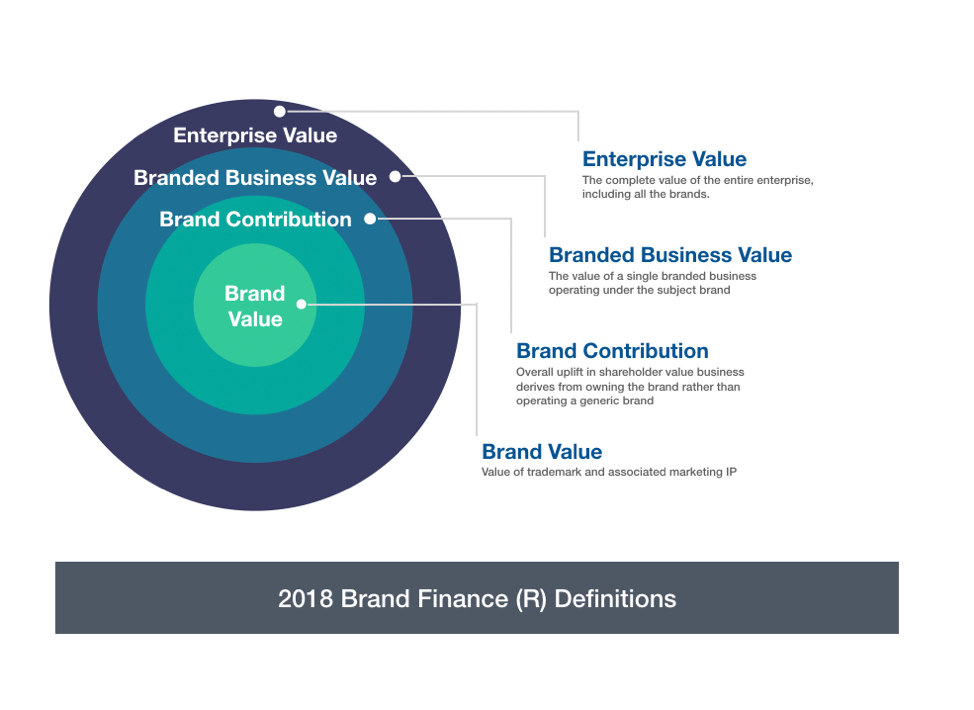
Overview
There is significant confusion on what defines a brand, along with the value that it provides organizations – especially among small and mid-size firms who have yet to fully capitalize on its brand equity. This article seeks to provide an explanation into what is a brand and why it should be taken more seriously than it typically is for firms early on in their business journey.
What is a Brand?
What a difficult question to answer. To define a brand is almost as complicated as trying to answer: “what is beauty?” While there may be universally accepted truths regarding what beauty may be, it is highly subjective. We know what beauty is but struggle to describe it using words – rather, we rely on a person’s emotional or psychological response to beauty to be able to describe it. Brand is a little bit like that. It is experiential.
A few things that we do know about a brand is that there is a sense of trust, brands are familiar, they can often become part of a cultural identity if it persists long enough and over time a brand generates value (brand equity).
Brands are Trusted
When a new product is introduced to the market by an unknown company, the product is the company. As a company generates sales of that product, it develops an installed base of users or customers that continue to purchase that product because it performs at or above expectations. As the product becomes widely adopted, the testimonials and feedback of the early adopters serve to drive greater sales as well as instill trust in the product – thus creating value in the product brand.
Once this trust is established, the brand starts to become perceived as a trusted brand – helping to further amplify the value of the brand. As a result of the positive brand perceptions of the product, the company brand will start to grow through a process called brand association. As mentioned previously, trust is fluid; as it shifts from the product to the company, the company’s brand equity grows in value.
Some interesting things may happen here. Some companies are able to capture corporate brand equity equal to or in excess of the product brand. Whereas some companies struggle to capture the same brand equity as its flagship product. Naturally companies should strive to shift that brand equity from the product to the company in order to drive additional sales for the rest of the company portfolio. When the company is successful in establishing brand equity, it serves as an umbrella for the rest of its offerings – thus driving pull-through.
Examples of product brands include the iPhone®, Coke Zero® and the Mac® (to name a few) each of which is a registered trademark of Apple® and Coca-Cola® companies.
Brands are Familiar & Recognizable
A brand may start off as a recognized color, slogan or logo set apart through colors, fonts and images. However, these physical manifestations of the brand are not the only defining characteristic of that brand. Nonetheless, they are important. They help to set the company and its products apart – differentiating it from the competition. Conversely, “knockoffs” seek to accomplish the exact opposite by mimicking the look and feel of a valuable brand to confuse customers and drive sales.
As products and companies gain the trust of customers, these same customers seek out the company or product because it is familiar and recognized.
Brands Become a Part of Consumer Identities
“Oh, you drink Pepsi? I drink Coke Zero…”
“You’re a PC user? I’m a Mac user…”
“You still use internet explorer? Time to switch to Chrome…”
We say these statements with a sense of pride and ownership, as if that brand is a part of us. Brands can also be nostalgic. There also comes a time in the journey of a brand where users don’t want it to change. It is so old that changes to the brand are considered profane.
The most successful brands become a part of an individual’s identity, whether employees or customers, and generate brand loyalty as if to say purchasing anything other than that particular brand isn’t even on the table.
Brands Have Value
We protect, measure and track a brand’s value (brand equity) through such means as trademarks and goodwill. A global brand valuation consulting agency, BrandFinance® focuses on valuing the world’s top brands defines the value of the brand, uplift, branded businesses and enterprise value as identified in the figure below.

Several other metrics that BrandFinance uses to rate brands include reputation, innovation, quality, trust, loyalty and “net promoter score”. According to its Global 500 2019 Report issued in February 2019, BrandFinance ranked Amazon® as the number 1 with a global brand value of $187.9 billion continuing to lead global brands such as Apple, Google, Microsoft, Samsung and Facebook. Given its historical prominence among brands, Coca-Cola® is often used to benchmark the rest of the brands. In 2019, Coca-Cola’s brand value was assessed at $36.2B and ranked 37th among the top 500.
This, however, is a different story than what was taking place amongst the global brands in 2016. At that time, BrandFinance ranked Apple as the global brand that dominated($145.9B) with Google a distant second ($94.2B). Coca-Cola’s brand value in 2016 was $34.2B and was ranked 17th among the top 500. A quick conclusion that can be made from this data is that brand values can remain relatively flat, while other brands can continue to grow over time – as has happened in the last several years – especially among technology brands.

Brands are Protected
To say that these brands are fiercely protected would be an understatement. These firms, better than others, understand the value of a brand due to the risks associated with not protecting its brand. New market entrants with no brand equity may attempt to mimic the look & feel of a branded company’s products in an effort to siphon brand equity and drive sales. Or worse, that new market entrant may not have robust quality control mechanisms that would protect consumers and when its products are used, may cause harm to consumers. In addition to causing public harm, it would also pollute the brand of the originator company, creating confusion in the marketplace and potentially damaging the future health of the company.
Insight
Brands become inextricably mixed with an organization’s identity, its employees, its customers and the products and services it offers. As a young organization, brand value is nominal and often trails behind a firm. However, as a company grows in size, so does its brand – often preceding the firm, helping to open doors and establish credibility.
While many young companies do not focus on the company brand – they should. Brands provide accretive value that help drive pull-through. When many M&A firms talk about pull-through or 1+1=3, what they are really talking about is brand.
Please note, brand is not one distinctly defined element or another. It is an experience. While companies fiercely protect their trademarked logos, they do so because of what those logos stand for rather than simply the logo itself.


